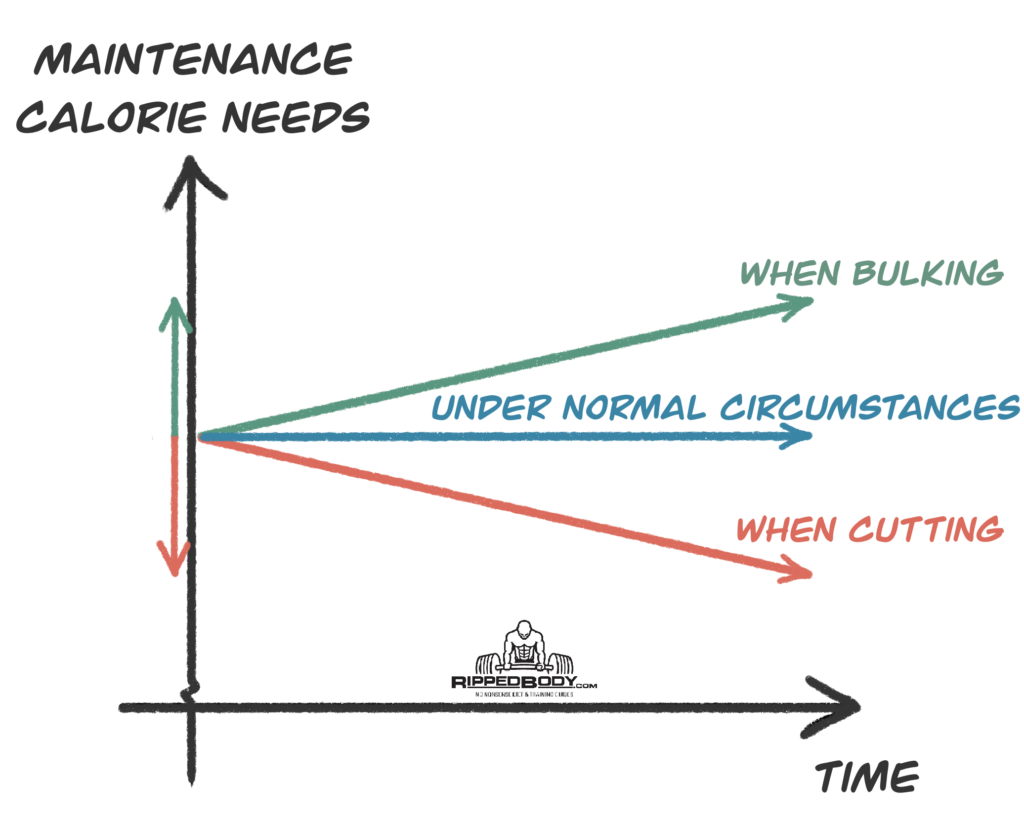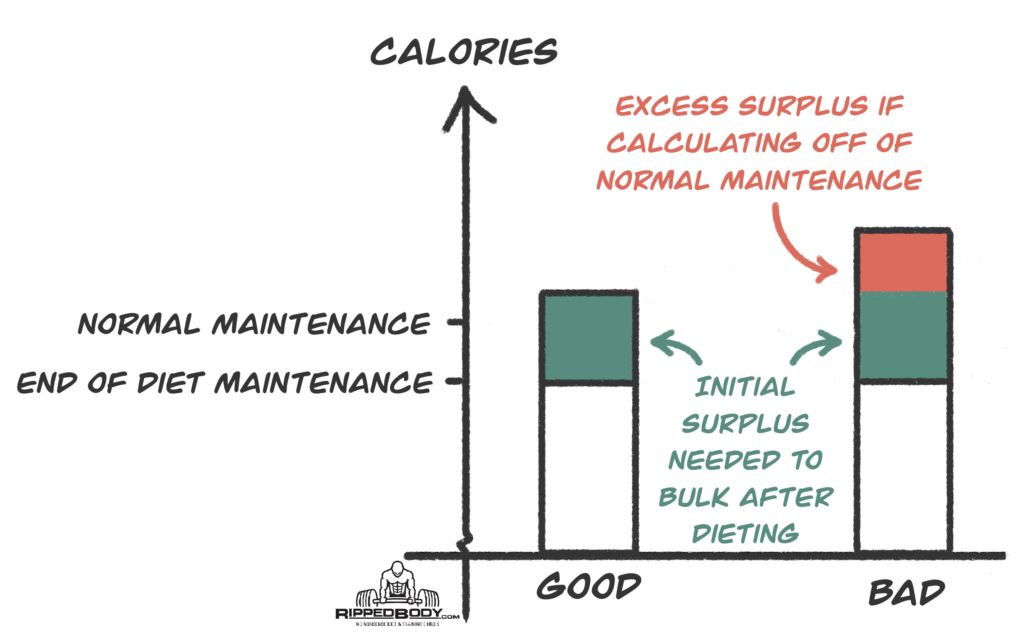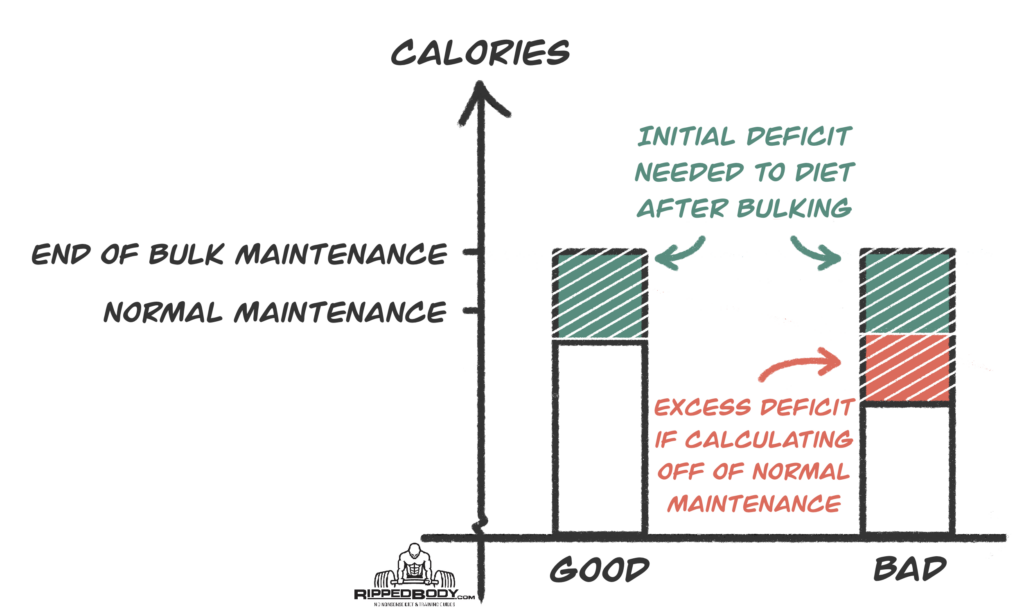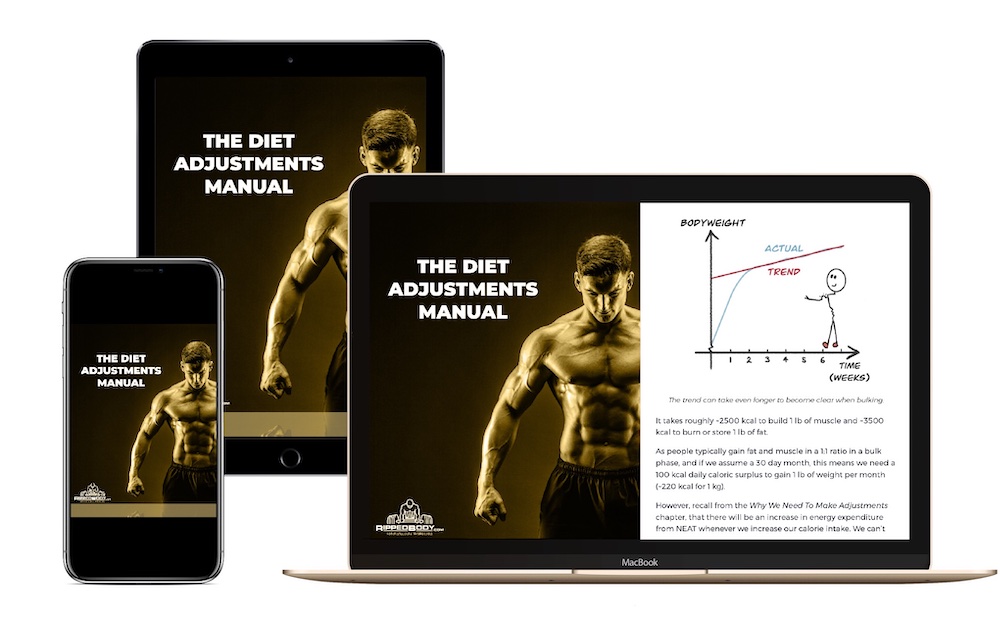Picture this: You’ve finally finished cutting. You’re now lean enough to bulk and excited to finally eat a good amount again.
What’s the last thing you want to do? — Gain back a bunch of the fat you’ve just lost.
What’s the first thing that most people do? — Gain back a bunch of the fat they have just lost.
Their mistake is heading over to the calorie and macro calculator to make a new calculation.
Yes, this seems like the right thing to do, but they’ve screwed themselves and don’t even know it. People make the same mistake when they transition from bulking to cutting too.
The result is that bulking phases start with excessive calorie surpluses, costing us unnecessary fat regain. Diet phases start with large deficits, risking hard-earned muscle losses. And as previously discussed, these cardinal sins will put you in physique purgatory.
Use your progress data when transitioning between cutting and bulking phases. You will stay leaner when bulking, maintain muscle when cutting, and get to your goals much faster.
Don’t Use a Calorie Calculator For A Second Time
Recall from the Why Calorie and Macro Adjustments Are Needed chapter that our maintenance energy needs change over time in reaction to a sustained calorie deficit or surplus.

Part of this is because we are smaller or larger physically, with different energy needs, but part is due to metabolic adaptation.
A calorie calculator can’t take this into account; it will assume normal maintenance circumstances. So if your metabolism is already suppressed from a long period of cutting and you jump straight to a bulk calculation, your calorie intake will be higher than necessary, you will gain weight too quickly, and an unnecessary amount of fat regain may happen.

Don’t use a calorie calculator to estimate your calorie needs for a bulk after cutting. The calculator can’t factor in metabolic adaptation and will assume normal maintenance, which will lead to a calorie excess (right). It’s better to make a calculation based on your current, lower, end-of-diet maintenance point (left).
Similarly, if your metabolism is already ramped up from a long period of bulking and you jump straight into a cutting calculation, your calorie intake will be lower than necessary, and you may lose weight too quickly, which will put the hard-earned muscle you just gained at risk of loss.

Transition Based on Your Progress Data
The solution is to make calculations for calorie increases or decreases based on your calorie intake and weight data. This will take your current energy needs into account, rather than relying on estimations that will overshoot things.
There is no doubt that this is a more conservative approach, but if you have been struggling to see any progress after your cut and bulk phases, I would recommend it.
Recall that the goal is to reduce the time taken to reach your genetic potential and this will help you do so.
However, before transitioning from a cut to a bulk, or vice versa, I recommend that you spend two weeks at estimated maintenance.
Large and sudden changes in calorie intake can be a bit of a shock.
Fatigue can hit hard if you suddenly start eating nearly half the amount of food. Afternoon sleepiness can hit you hard when you’re you’re eating nearly double, and gastrointestinal distress (constipation, bloating, diarrhea, abdominal pain) isn’t uncommon.
A short period at maintenance can lessen the impact, and I’ve found two weeks is the sweet spot. So, as we will all need to know how to find maintenance, that is what I’ll explain in the next chapter.

Thank you for reading. This was a sample chapter from my book, The Diet Adjustments Manual 📙.
Questions are welcomed in the comments, and I answer daily.

Privacy policy.